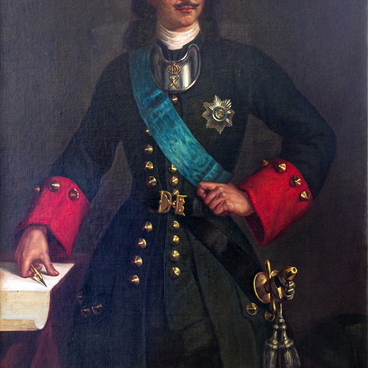The monument to Peter I on Senate Square in St. Petersburg was ordered by Catherine the Great and pursued two goals: it was supposed to glorify the first Emperor of All-Russia while at the same time presenting Catherine the Great as his successor. This is evidenced by the brief inscription on the granite: “For Peter I / Catherine II.”
Denis Diderot, a prominent figure of the Age of Enlightenment with whom Catherine exchanged letters on a regular basis, recommended her to commission the monument to the French sculptor Etienne Maurice Falconet. In 1766 Dmitri Alekseyevich Gallitzin, the Russian diplomat in Paris signed a contract with Falconet who began working on the monument in 1768.
The equestrian statue was made by Falconet himself; the snake under the horse’s hooves was made by Fyodor Gordeyev. The emperor’s head was sculpted by Falconet’s assistant Marie-Anne Collot, for which she was accepted into the Imperial Academy of Arts and received a lifetime pension of 10,000 French livres. Benoit Ersman was initially invited to do the casting, but Yury Felten, who was the head of this project, was dissatisfied with delays and replaced Ersman with the master founder, Vasily Ekimov. In 1778, the monument was cast in bronze.
The competition to find a suitable boulder for the pedestal was announced in the newspapers. The “Thunder Stone” was chosen. It was discovered in the vicinity of the village of Konnaya Lakhta by Semyon Vishnyakov, a peasant and building stone supplier. The competition committee went to the place indicated by Vishnyakov and found a moss-covered rock buried halfway into the soil. It is believed that the rock acquired its shape as a result of a lightning strike. Presumably, the stone weighed about 200 tons, and was about 13 meters long, 6 meters wide and 8 meters high. The estimated age of the rock is around 1.5 billion years.
Transportation of the stone began in November, when the soil was sufficiently frozen for the stone not to sink, and continued until the end of March (early April). Catherine II ordered the stone to be delivered to St. Petersburg in its original form: the uncouth boulder perfectly contrasted the wild Rus before Peter and the masterfully-made figure of the tsar-reformer.
The opening of the monument in 1782 was marked by the release of a commemorative medal. It was made by Johann Caspar Gottlieb Jäger, a native of Hesse (circa 1750s — 1791), who had been in the Russian service since 1772. He was a medallist at the St. Petersburg Mint, taught carving on steel and stone surfaces at the Academy of Arts. The initials of the master adorn the obverse and reverse sides of the medal.



